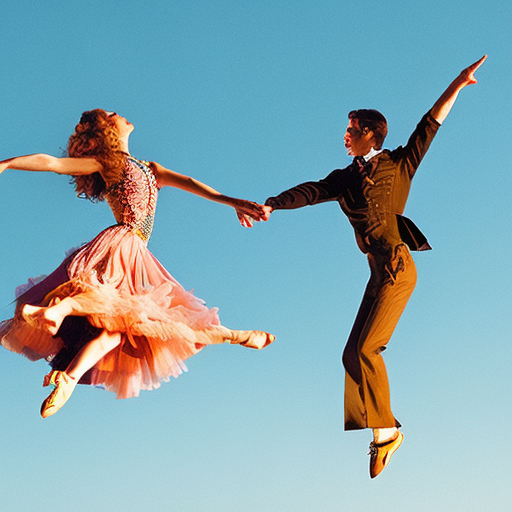Summary: Swing dance is a lively and energetic form of partner dance that originated in the 1920s and 1930s in African-American communities. It evolved alongside the swing jazz music of the time and quickly gained popularity across the United States and around the world. Swing dance is characterized by its energetic footwork, acrobatic moves, and improvisation. It has various styles, including Lindy Hop, Charleston, Balboa, and East Coast Swing, each with its own unique characteristics and influences. Today, swing dance continues to thrive as a vibrant and inclusive social dance form enjoyed by people of all ages and backgrounds.
Origins and Evolution
Swing dance emerged in the African-American communities of Harlem, New York City, during the 1920s and 1930s. It developed in response to the lively and energetic swing jazz music that was gaining popularity at the time. The dance style drew influences from various sources, including African rhythms, tap dance, and other partner dances like the Charleston. The Lindy Hop, a fusion of these influences, became the most popular style of swing dance during the swing era.
Characteristics and Styles
Swing dance is known for its energetic and improvisational nature. It is typically performed with a partner, with dancers using a combination of footwork, spins, lifts, and aerials. The footwork is often fast-paced and syncopated, matching the rhythm of the swing music. Swing dance also incorporates elements of solo dancing and improvisation, allowing dancers to express their individual style and creativity.
There are several styles of swing dance, each with its own unique characteristics and influences. The Lindy Hop, also known as the Jitterbug, is the original style of swing dance. It is characterized by its dynamic footwork, acrobatic moves, and playful improvisation. The Charleston, which originated in the 1920s, is a solo dance that involves fast-paced footwork and energetic movements. Balboa, a partner dance that originated in Southern California, is known for its close embrace and intricate footwork. East Coast Swing, a simplified version of the Lindy Hop, is a popular social dance style that is easy to learn and can be danced to a wide range of music.
Popularity and Influence
During the swing era, swing dance became a cultural phenomenon, with dance halls and ballrooms packed with enthusiastic dancers. It was not only a form of entertainment but also a way for people to socialize and express themselves. Swing dance played a significant role in breaking down racial barriers, as people from different backgrounds came together to enjoy the music and dance.
Although swing dance experienced a decline in popularity after World War II, it experienced a revival in the 1980s and 1990s, thanks to dedicated dancers and enthusiasts who sought to preserve and promote the dance form. Today, swing dance is enjoyed by people of all ages and backgrounds, with vibrant swing dance communities existing in many cities around the world. It is often taught in dance schools and workshops, and there are numerous swing dance festivals and competitions held globally.
Inclusivity and Community
One of the remarkable aspects of swing dance is its inclusivity and sense of community. Swing dance scenes are known for their welcoming and friendly atmosphere, where dancers of all skill levels can come together to enjoy the music and dance. Swing dance events often feature live bands playing swing music, creating an authentic and immersive experience. The social aspect of swing dance is highly valued, with dancers forming connections and friendships that extend beyond the dance floor.
In conclusion, swing dance is a lively and energetic partner dance that originated in the African-American communities of Harlem during the 1920s and 1930s. It evolved alongside swing jazz music and has various styles, including the Lindy Hop, Charleston, Balboa, and East Coast Swing. Swing dance is characterized by its energetic footwork, acrobatic moves, and improvisation. It gained popularity during the swing era and experienced a revival in recent decades. Today, swing dance continues to thrive as a vibrant and inclusive social dance form enjoyed by people of all ages and backgrounds.












